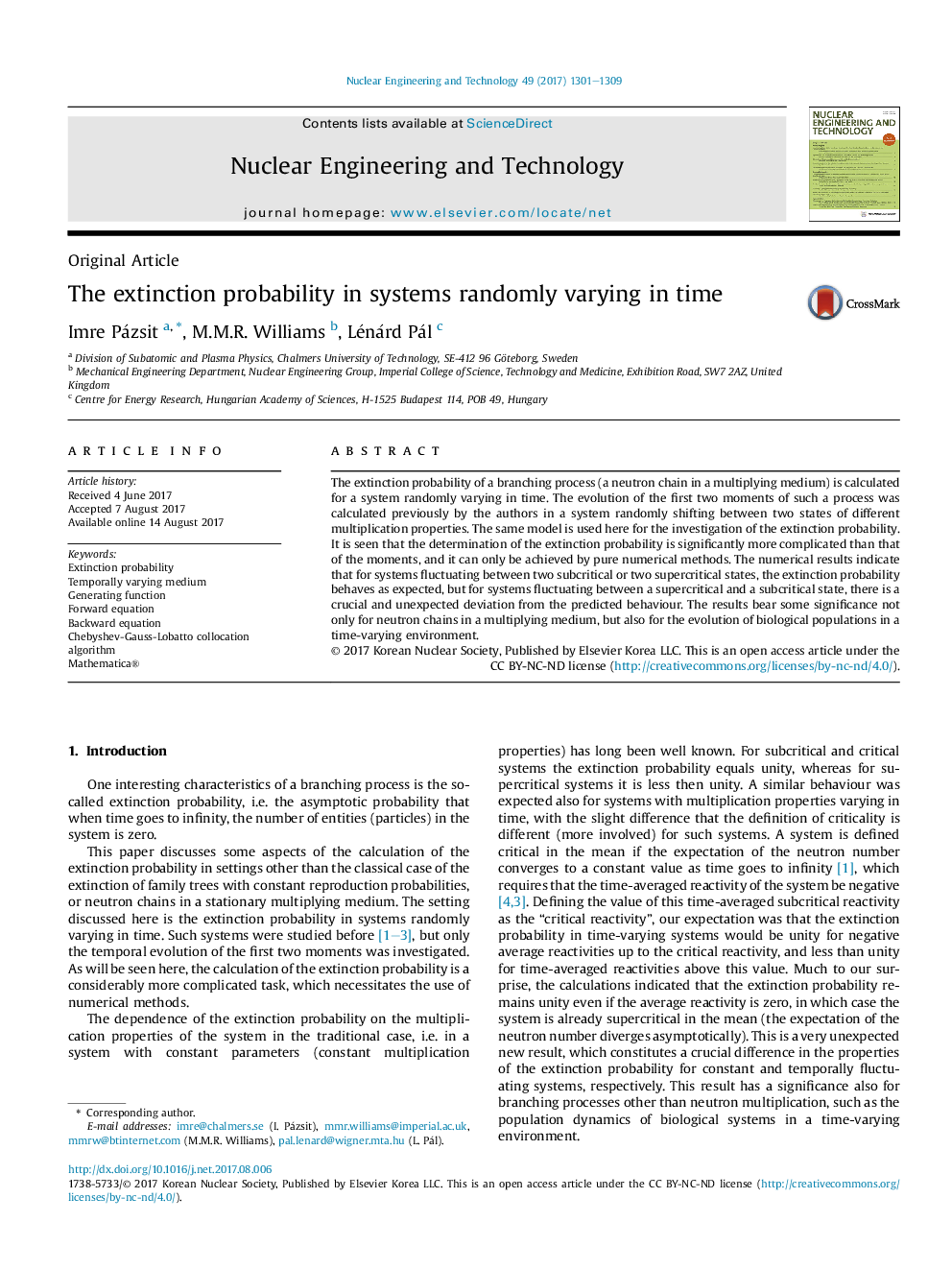| Article ID | Journal | Published Year | Pages | File Type |
|---|---|---|---|---|
| 5477887 | Nuclear Engineering and Technology | 2017 | 9 Pages |
Abstract
The extinction probability of a branching process (a neutron chain in a multiplying medium) is calculated for a system randomly varying in time. The evolution of the first two moments of such a process was calculated previously by the authors in a system randomly shifting between two states of different multiplication properties. The same model is used here for the investigation of the extinction probability. It is seen that the determination of the extinction probability is significantly more complicated than that of the moments, and it can only be achieved by pure numerical methods. The numerical results indicate that for systems fluctuating between two subcritical or two supercritical states, the extinction probability behaves as expected, but for systems fluctuating between a supercritical and a subcritical state, there is a crucial and unexpected deviation from the predicted behaviour. The results bear some significance not only for neutron chains in a multiplying medium, but also for the evolution of biological populations in a time-varying environment.
Related Topics
Physical Sciences and Engineering
Energy
Nuclear Energy and Engineering
Authors
Imre Pázsit, M.M.R. Williams, Lénárd Pál,
